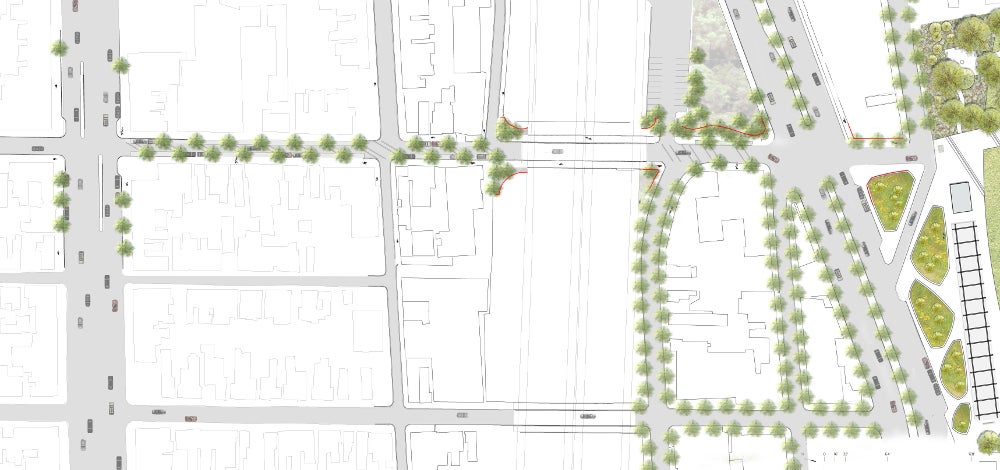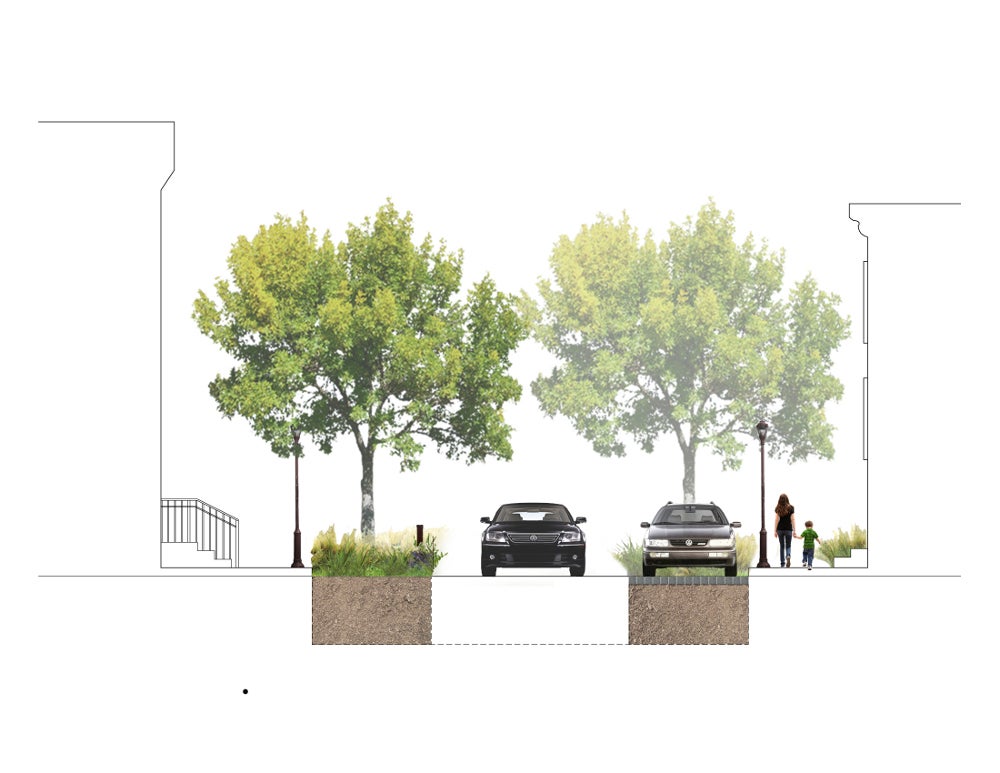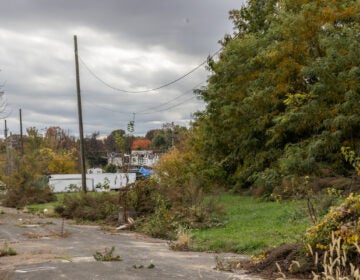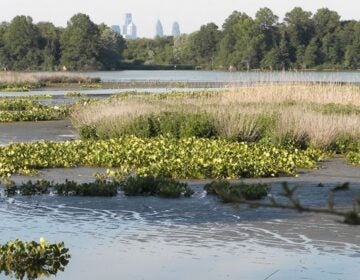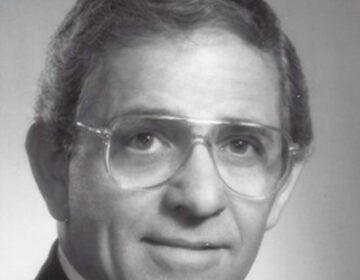Ideas for the Columbia Avenue Connector project
The Columbia Avenue of the future will likely be lined with trees, but just how many specimens remains under discussion.
Some neighbors of the Fishtown street are concerned about sacrificing parking for plantings, said Sarah Thorp, planning director at the Delaware River Waterfront Corporation, and also a Fishtown resident.
The improvements, which are expected to eventually stretch from Girard Avenue to Penn Treaty Park, are collectively called the Columbia Avenue Connector. The goal is to better connect Fishtown to the Park and the Delaware River in the same way the Race Street Connector links Old City to the river and Race Street Pier.
Landscape Architect Bryan Hanes, who created the Penn Treaty Park Master Plan, was hired to create the Columbia Avenue Connector plan. His idea is to stretch the green of the park – and potentially other design elements – into the neighborhood.
Columbia is “a nice residential street with lovely buildings,” but “it is really lacking in street trees,” said Hanes, of Studio Bryan Hanes.
So at a public meeting earlier this week, Hanes suggested adding 22 trees between the I-95 overpass and Girard Avenue.
But in most spots, the sidewalks – the usual spot for street trees – aren’t wide enough to accommodate that use, Thorp said.
“We proposed to move the trees off the sidewalk and into the parking lane,” Hanes explained. The trees would have to be a hardy species that can take an urban environment and not grow so tall as to interfere with overhead wires. Their trunks would be protected from parking cars with some sort of barrier type protection.
If all 22 trees were added, the existing 67 spaces between the overpass and Girard would be reduced by four. Hanes said he believes a compromise could be reached that would slightly reduce both the number of trees and the number of parking spaces lost. “We’ll continue to look at that in the next few weeks and see,” he said.
The issue will be discussed again at the second and final public meeting, which will be held sometime in March.
The section of the connector project between Girard and the overpass could be greened in another way, too. Hanes has proposed re-paving the two parking lanes with pervious pavement, which would let rainwater seep into the ground and help ease the city’s storm water run off problems.
There is no funding in place for this western-most portion of the Columbia Connector project. Hanes said he is doing only a conceptual plan, and when money to make it happen is found, more details may need to be added.
Logistics related to the second component of the plan – the treatment of the Columbia Avenue I-95 overpass – is the reason the DRWC chose to start work on the Columbia Connector now. The overpass is being rebuilt as part of PennDOT’s Revive 95 project. PennDOT is working with neighborhoods and organizations where work on overpasses and streets is being done to determine how community goals and PennDOT’s needs can mesh. For example, PennDOT must provide lighting, and there will be concrete overpass walls, but different designs may be chosen by different communities. PennDOT also wants to know future community plans so that it doesn’t build anything that would cause conflict, and have to later be changed.
Work will begin on this portion of the highway in the fall, and so PennDOT needs the Columbia Avenue overpass design ideas very soon, Thorp said.
PennDOT is putting the project out to bid in March. A schedule will be part of the bid proposals, but Thorp said the work plan would run at least 12 to 18 months.
That means the final version of the design for the area beneath the overpass will be shown at the March meeting.
“It’s dark, dingy and creepy under there,” Hanes said of the overpass. “We want to make it the most inviting place we can.”
A big key, just as at Race Street, will be lighting. Thorp said they are looking at using “very bright, LED lighting” instead of the current sodium halogen variety.
Hanes showed meeting-goers designs that could be pressed into the concrete walls. They included a wampum belt motif, which would symbolize the belt given to William Penn by Chief Tamenend during the Treaty of Friendship signed at Penn Treaty Park; Fishtown’s fish symbol, the shad; and industrial-inspired designs that call on the area’s workshop past.
There is money in hand to fund a third component for the Columbia Street Connector project, public art.
“This is potentially a fence element or a ribbon element in specific locations, from the west side of the underpass on to Penn Treaty Park,” Thorp said.
The artwork is on a separate track, Thorp said. Hanes is identifying locations that are appropriate for art, but then DRWC will select an artist.
That artist may choose to use some historic materials in his or her work – materials PennDOT saved when the Cramp Shipyard building was torn down to make way for the highway project.
Hanes noted that as part of the highway project, PennDOT will be removing the ramp that crosses Columbia across Delaware Avenue from the park. Based on community input, PennDOT is now seeing this as potentially a parking area that is lined by green space and has room for dog walking. “It will have a green edge,” Hanes said.
Together, the new pocket park, the Columbia Avenue Connector, and the improvements to Penn Treaty could really change the feel of the street and emphasize the connection between park, river and neighborhood, Hanes said. “There’s an opportunity for much more park-like environment going further up the street,” he said. It could make Penn Treaty Park feel like it extends to the overpass, and then a linear green arm would reach beyond into the neighborhood, Hanes said.
Reach the reporter at kgates@planphilly.com
WHYY is your source for fact-based, in-depth journalism and information. As a nonprofit organization, we rely on financial support from readers like you. Please give today.




